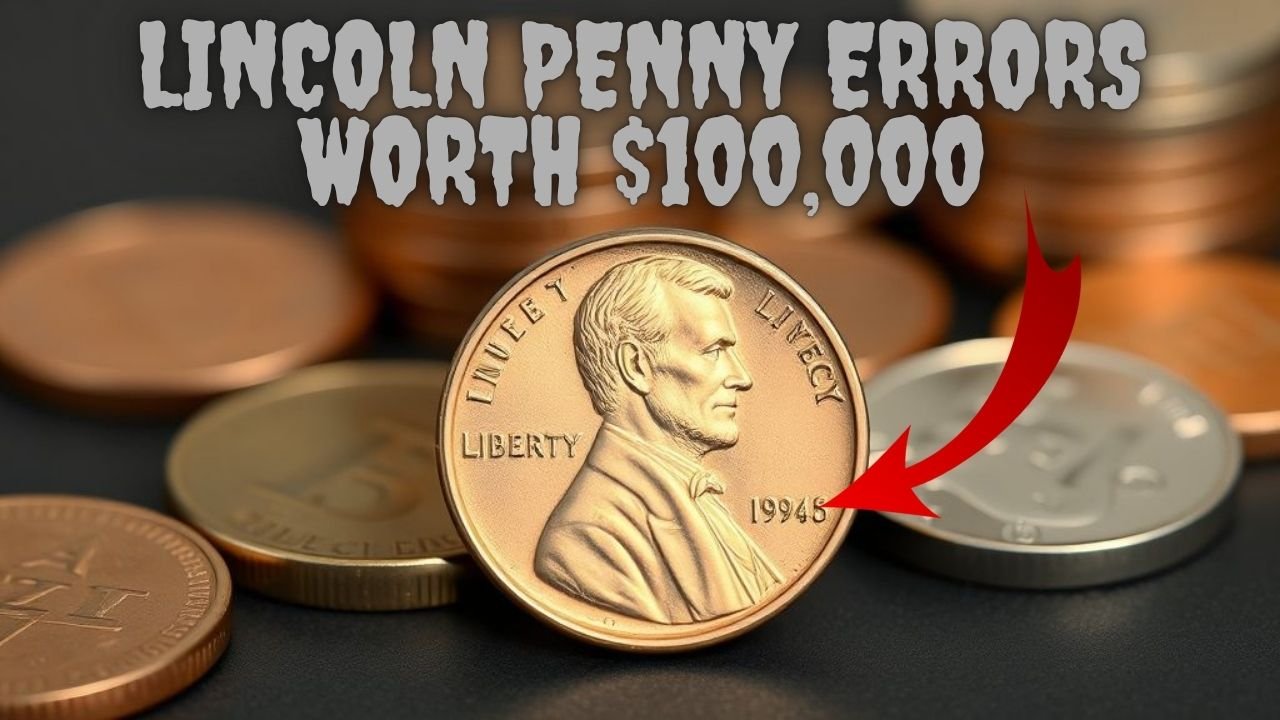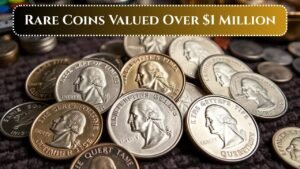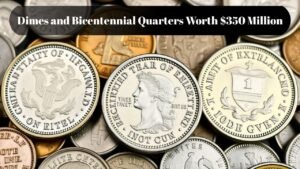The global of coin collecting is packed with charming discoveries, particularly when it comes to Lincoln pennies. Certain minting mistakes have converted those everyday coins into coveted treasures, fetching brilliant sums at auctions.
In this article, we’ll delve into the pinnacle 3 Lincoln penny mistakes valued over $100,000, exploring their particular traits and the memories behind their rarity.
Understanding Minting Errors and Their Impact on Value
Minting errors show up while versions from the usual coin production manner bring about one-of-a-type anomalies. These mistakes can substantially enhance a coin’s price, especially whilst they are rare and well-documented. The Lincoln pennies mentioned above are fantastic examples of ways these kinds of mistakes can turn everyday coins into top notch collectibles.
The attraction of coin accumulating lies inside the thrill of discovering hidden treasures. Lincoln pennies with minting mistakes, including the 1943-D Bronze Cent, 1943-S Bronze Cent, and 1944-S Steel Cent, exemplify how anomalies can cause great value.
Whether you’re a seasoned numismatist or a curious beginner, keeping an eye fixed out for these rare pennies may want to potentially result in a awesome find.
1. The 1943 Bronze Lincoln Penny
What Makes It Rare:
During World War II, the U.S. Mint switched from copper-primarily based (bronze) pennies to zinc-coated metallic cents to conserve copper for the conflict effort. Almost all 1943 pennies had been metal, however a completely small number (estimates are about 10-15 acknowledged examples) had been struck on leftover bronze (95% copper, 5% tin/zinc) planchets through mistake. That makes them extremely rare.
Key Identifiers:
- The coin will not be magnetic (steel cents stick to magnets; bronze ones don’t).
- Weight: around 3.11 grams (steel 1943 cents weigh about 2.7 grams).
- Color: Bronze or copper color (reddish or brown tones) instead of the gray/silver steel look.
- The date “1943” in the usual Lincoln Wheat penny design.
Auction Strengths & Known Prices:
- These have sold for over $300,000–$400,000 for well-preserved specimens. One example (grade MS-63 BN) sold for ~$372,000+.
- Some of the rare “bronze 1943 pennies” have reportedly sold for over $1 million in private sales for top-condition coins.
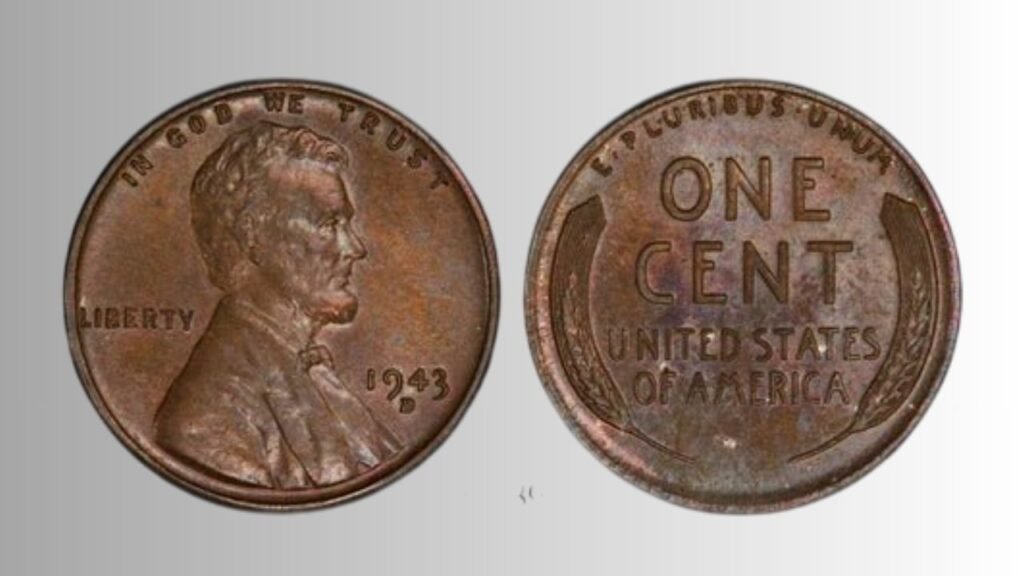
2. The 1955 Doubled-Die Obverse (DDO) Lincoln Penny
What Makes It Rare:
A doubled-die errors happens when the die used to stamp the coin has the design (or textual content) doubled because of a misalignment or mistakes within the hubbing procedure. In 1955, the Philadelphia Mint produced a batch wherein the obverse (the front) has very strong doubling inside the date (“5”s), LIBERTY, and IN GOD WE TRUST. This blunders is iconic amongst collectors.
Key Identifiers:
- Strong, crisp doubling on “LIBERTY” and “IN GOD WE TRUST,” especially visible without magnification (or with moderate magnification).
- Clear doubling of the date “1955,” especially the two “5”s.
- The obverse doubling is very obvious compared to most machine-doubling (machine doubling tends to look flat or ghost-like).
Auction Values:
- A 1955 Doubled-Die Obverse penny graded MS-65+ Red sold for $124,875 at auction.
- Lower condition examples (circulated or lightly worn) still fetch many thousands of dollars depending on visibility of the doubling.
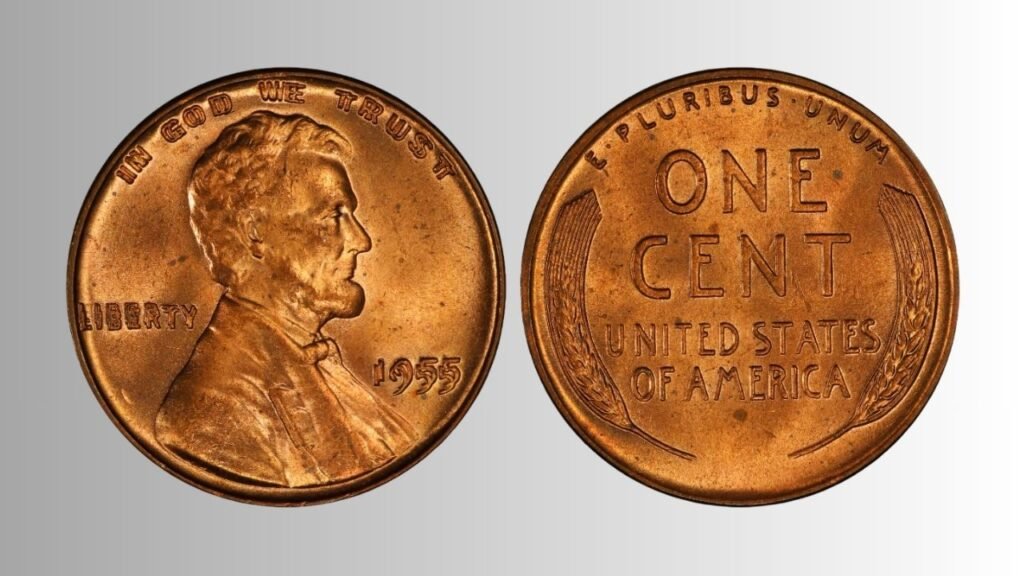
3. The 2001-D Lincoln Cent Mule Error
What Makes It Rare:
A “mule” error is when a coin is struck with mismatched dies—i.e., the obverse (front) die of one design is paired with the reverse (back) die meant for a different coin. The 2001-D Lincoln Cent mule error has the Lincoln obverse, as expected, but instead of the usual Lincoln Memorial reverse, it has the reverse intended for a Roosevelt dime. These are extremely scarce.
Key Identifiers:
- Front (obverse): Abraham Lincoln’s portrait as usual.
- Back (reverse): The design of a Roosevelt dime’s reverse instead of the Lincoln Memorial design.
- Mint mark “D” (Denver) indicating where the error was produced.
Value:
- Some of these mule errors have reportedly sold for over $100,000 depending on condition. Even coins in poorer state (but verified mule) can be worth tens of thousands.
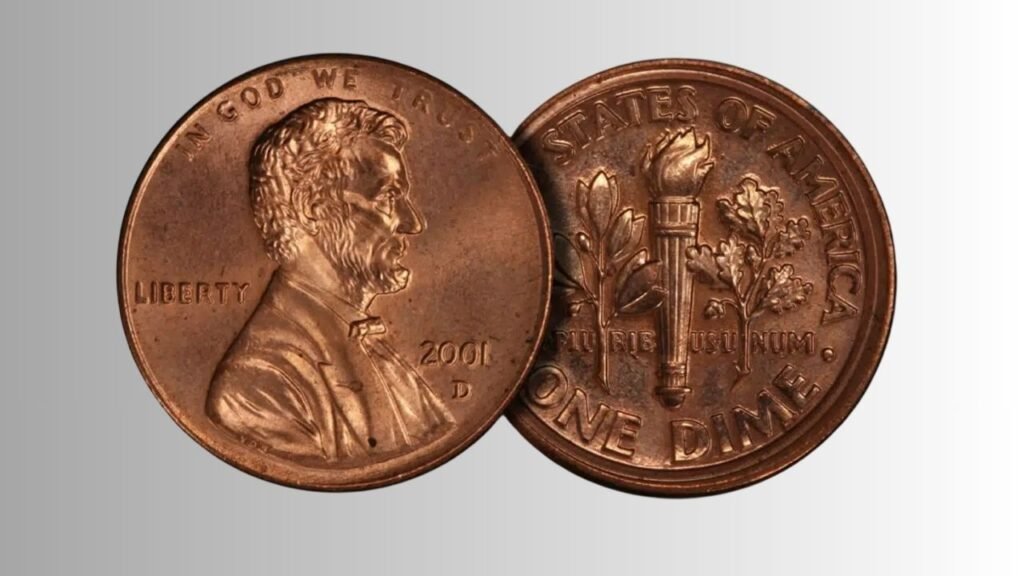
What You Should Do If You Think You Have One
If you suspect you might own one of these rare pennies:
- Don’t clean or polish it: Cleaning often damages the surfaces and destroys value.
- Check basic physical traits: color, weight, magnetism (for the 1943 bronze), clarity of doubling (for 1955 DDO), or mismatched designs (for 2001-D mule).
- Compare with official examples: Use high-resolution images from reputable coin grading agencies.
- Get it graded: Third-party grading services (e.g., PCGS, NGC) will authenticate the mistake/variety and grade the condition, which strongly influences price.
- Reach out to established numismatic experts or auction houses: They can help verify and, if it’s genuine, assist in auction or private sale.
Conclusion
Lincoln pennies are the underdog of coin collecting: designed to carry everyday trade, but marked by means of some rare mistakes that can be worth six or even seven figures. The 1943 Bronze Lincoln Penny, the 1955 Doubled-Die Obverse Penny, and the 2001-D Lincoln Mule Error are three shining examples of coins worth far beyond their one-cent face value. If you have old pennies tucked away, take a moment—inspect them more carefully. One tiny mistake from many years ago might suggest you’ve were given something virtually special to your palms.
FAQ’s
How do I find out if I have a scarce Lincoln penny?
To determine a scarce Lincoln penny, look at the coin’s date, mint mark, and any peculiar attributes like misprints or material imperfections. Visually comparing your coin to reputable scarce varieties or seeking advice from a professional coin appraiser can give insight.
Why is the 1944-S Steel Cent valuable?
The 1944-S Steel Cent is scarce because it is only known in two examples. It was produced in error since the Mint had switched back to copper planchets in 1944, and thus any steel cents produced that year were extremely rare.
